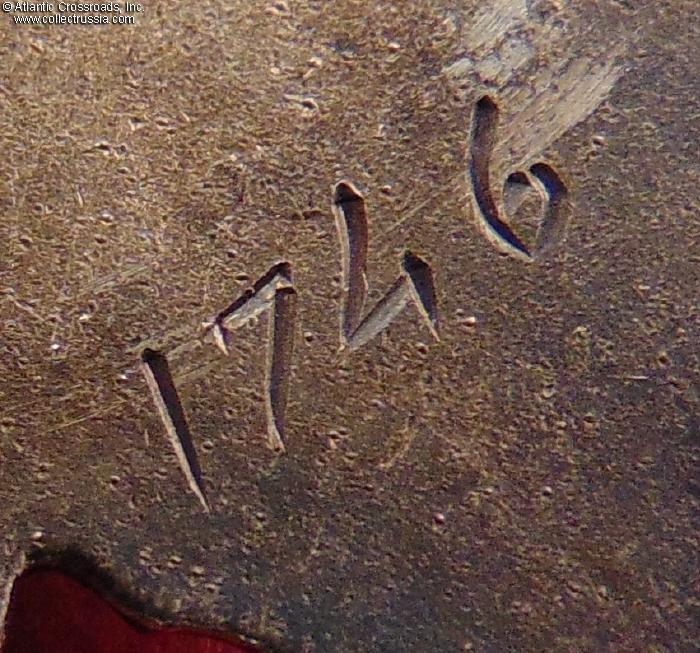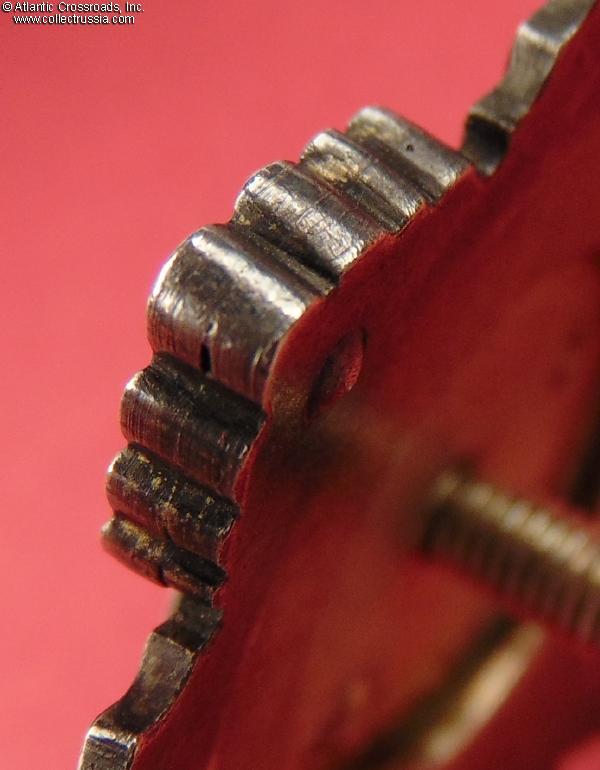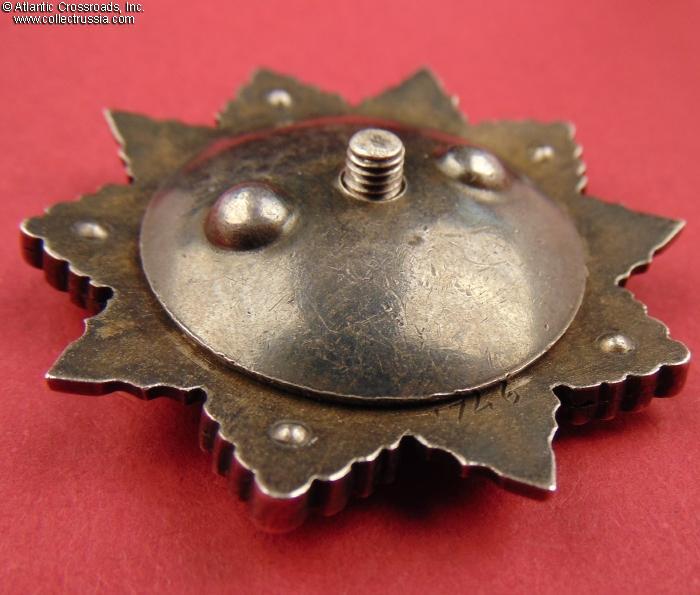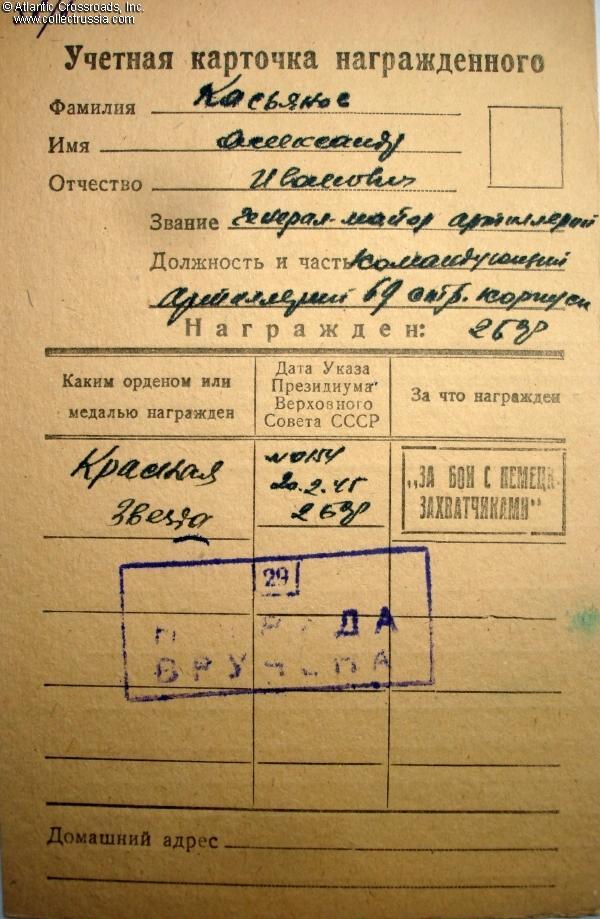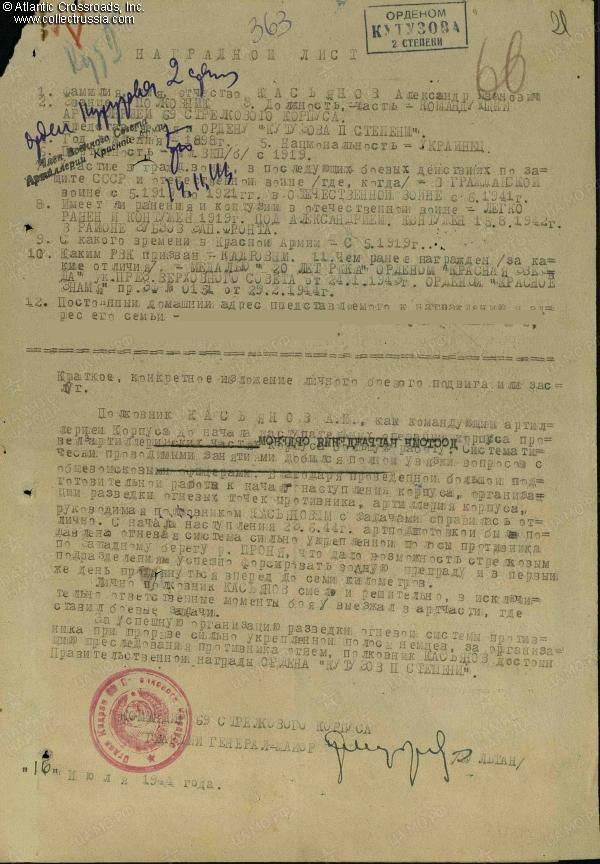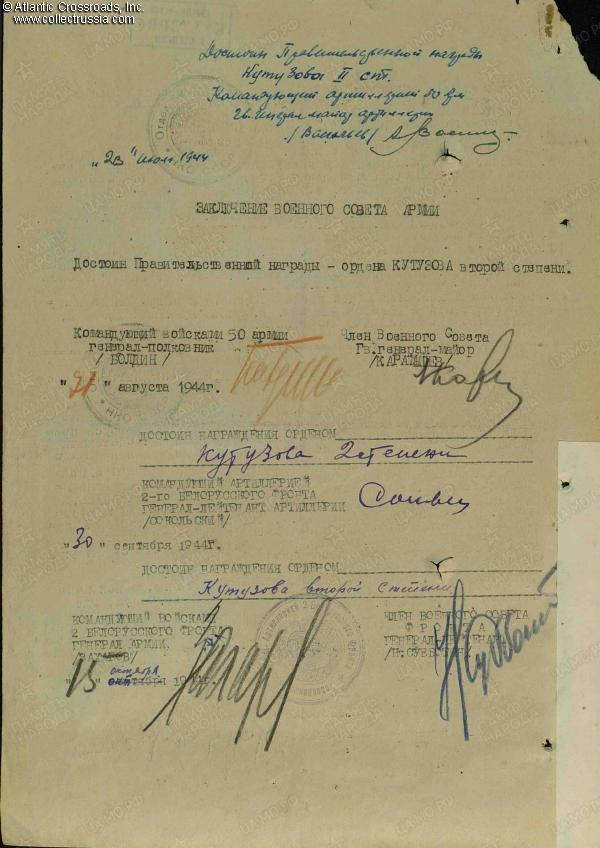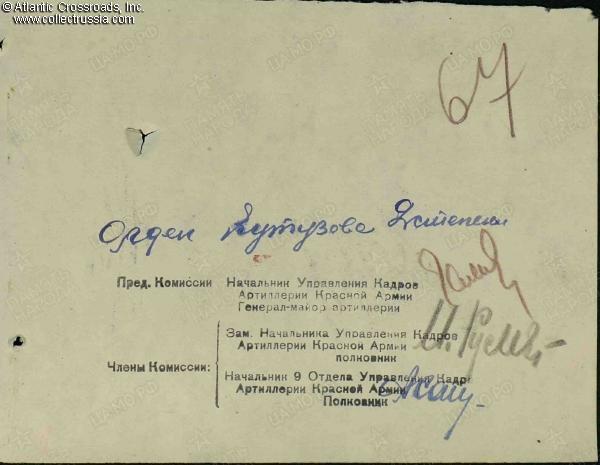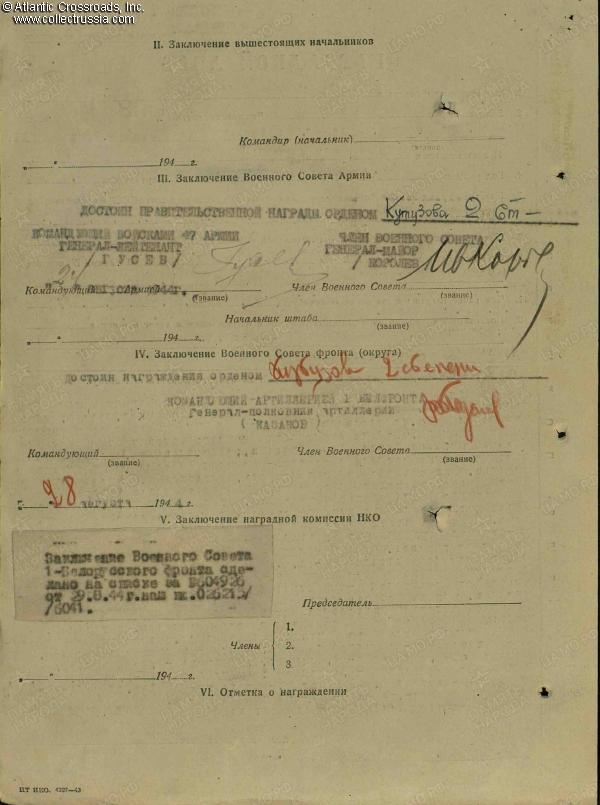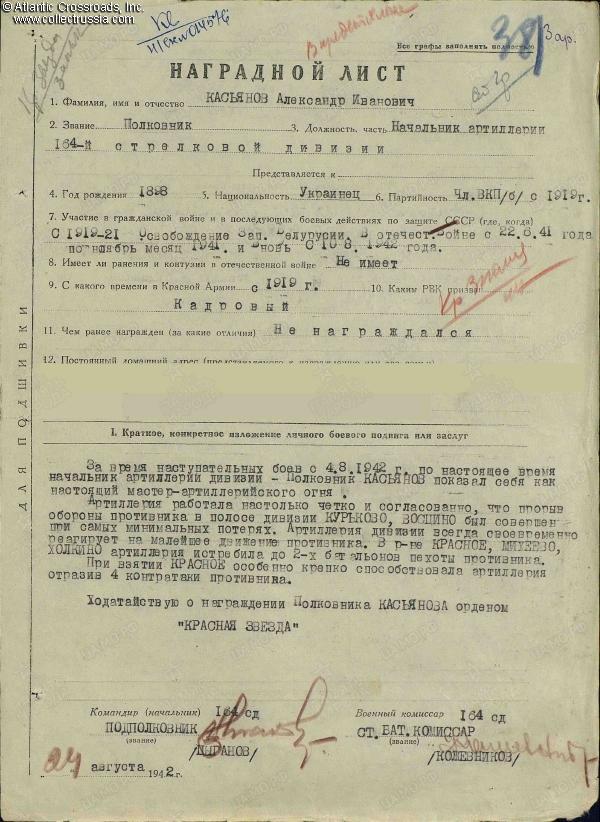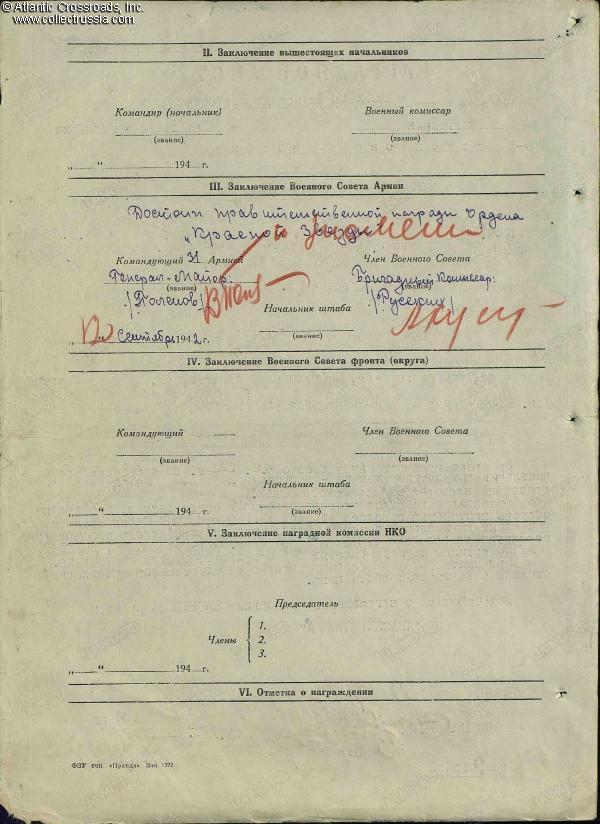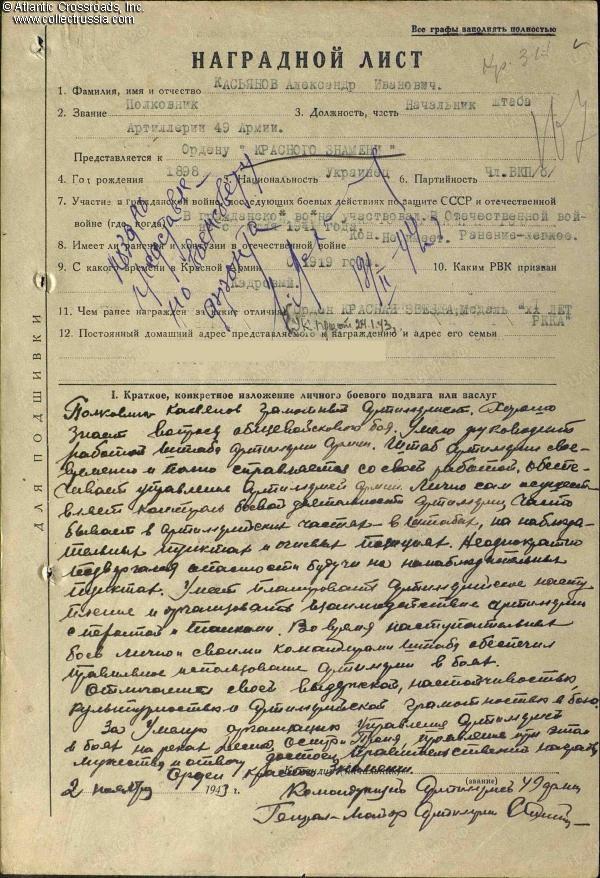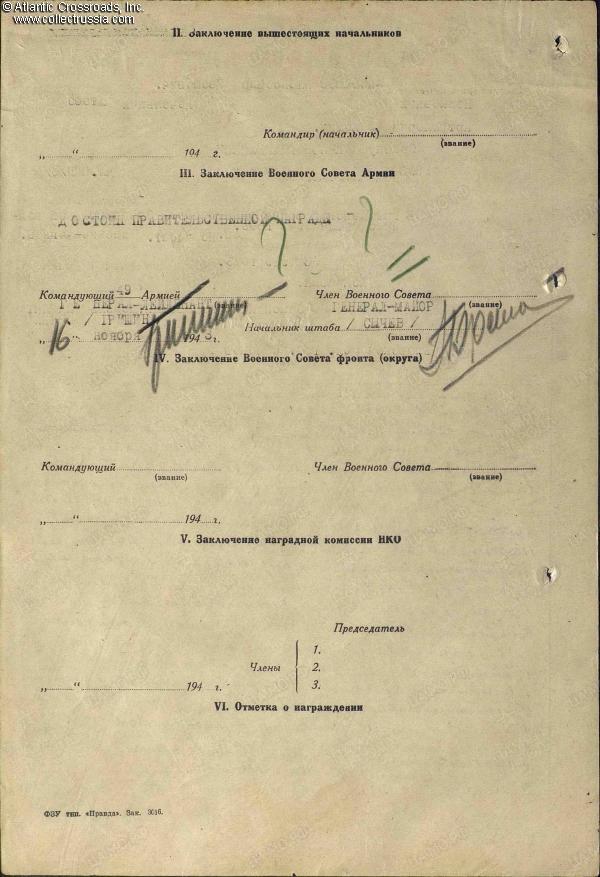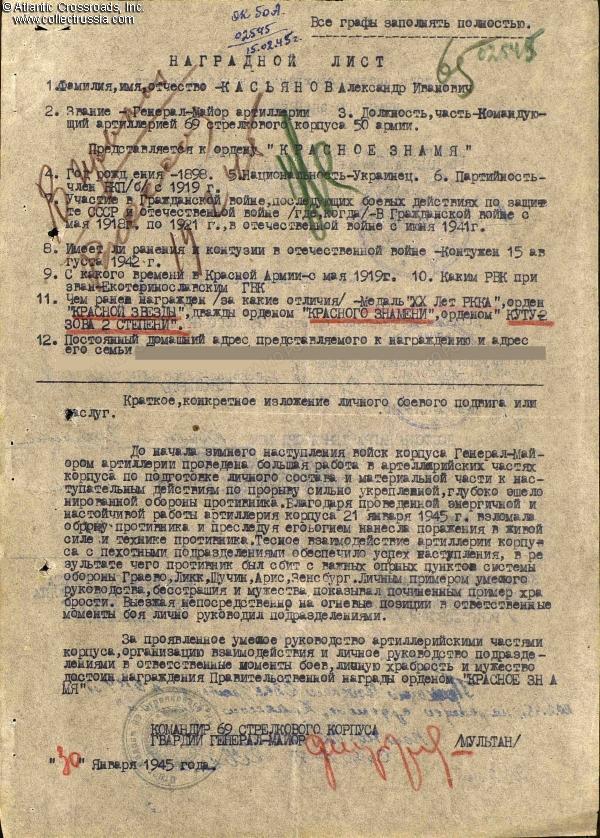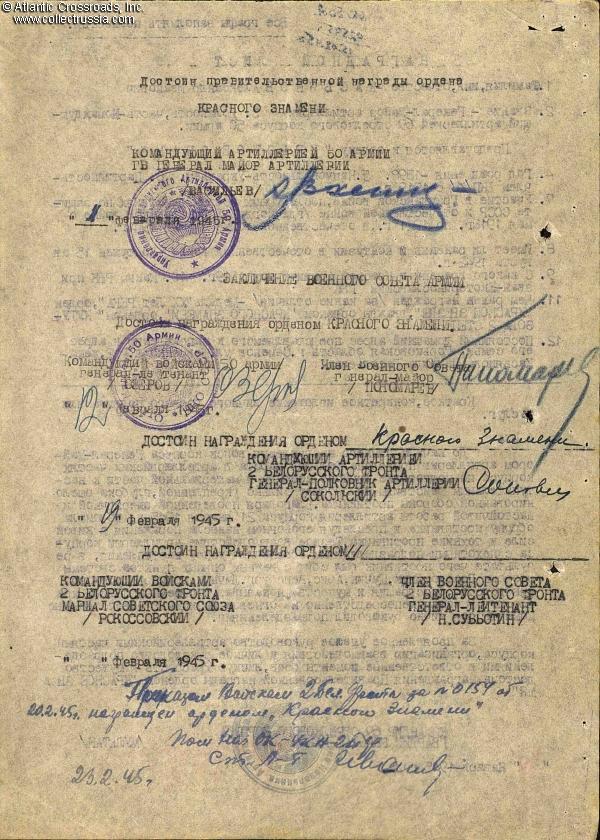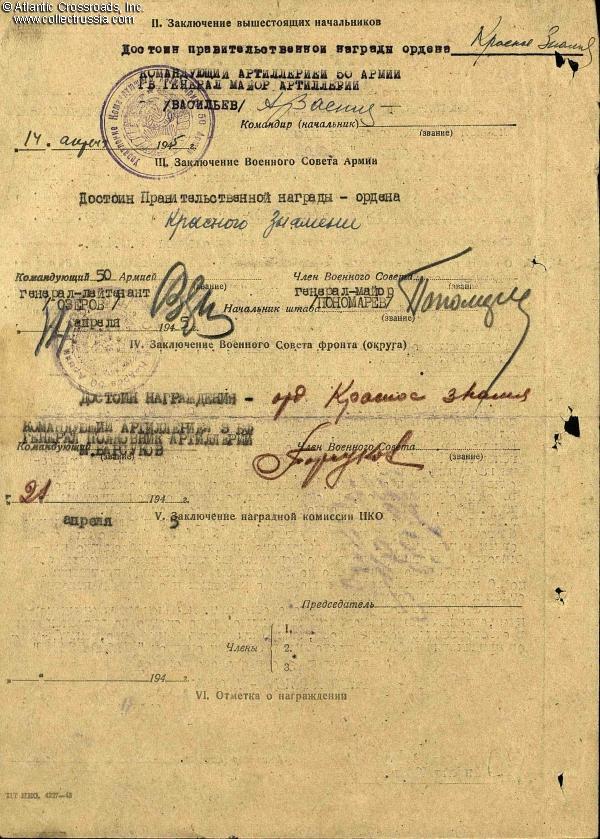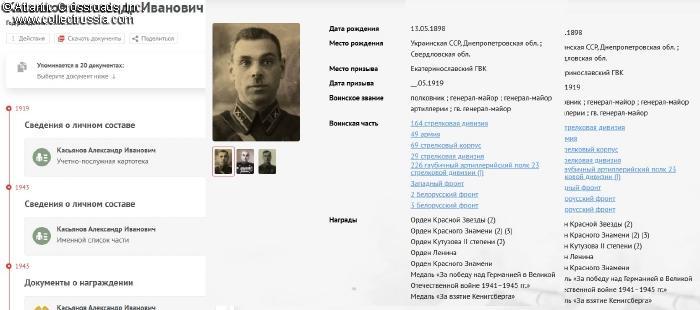Order of Kutuzov 2nd class, Type 2 Variation 2, #1746, awarded on 18 November 1944 to Colonel Aleksandr Kasyanov (Александр Иванович Касьянов), Commander of the Artillery, 69th Rifle Corps.
Silver, enamels; riveted three-piece construction. Measures 49.5 mm in height, 47.4 mm in width; weighs 37.7 g without the screw plate. This is the second variation of the Type 2, characterized by five rivets on the outer part of the reverse.
In outstanding, excellent condition. The enamel is literally pristine, completely free of any wear, not even the microscopic contact marks could be found under a 10x magnification. The bas-relief portrait is similarly untouched; its details are perfect and exceptionally crisp. The rays have a few minuscule dings that are practically unnoticeable to the naked eye, no nicks, bumps or significant scratches. The reverse is pristine and exhibits extremely attractive toning to silver. The rivets are tight. The screw post is full length, nearly 11.5 mm, and comes with an original silver screw plate. To summarize, this is a superb example - in our opinion, impossible to upgrade condition- wise.
Aleksandr Kasyanov was born in 1898 in the city of Yekaterinoslav (later, Dnepropetrovsk) in eastern Ukraine. In 1919, he joined the Communist Party and until 1921, took part in the Civil War. He remained on active duty afterwards as a career military officer until arrested in March 1938 during Stalin's purge of the military. Unlike many other Soviet army officers that were not so lucky, he received a "conditional release" during the following year, in time to take part in the Soviet 1939 campaign against Poland (euphemistically called "Liberation of Western Belorussia" in Soviet records). He fought in the Patriotic War from its first day on 22 June 1941. As of the late summer of 1942, Kasyanov had the rank of colonel and position of Commander of the Artillery of the 164th Rifle Division, at the time a part of the 31st Army, Western Front (army group.) Starting in early August, the division was engaged in one of many exceptionally costly and ultimately futile attempts to break through the German front near Rzhev that became unofficially known as the Rzhev Meat Grinder. Although the August - September Western Front offensive (known to Russian historians as the Sychevka-Rzhev offensive operation) turned out to be a fiasco, the artillerymen under Kasyanov command performed well, allowing the Soviet infantry in their sector to advance with minimal losses. Within three weeks in August, the division's artillery eliminated up to two battalions of German infantry and was particularly effective in repelling four enemy counterattacks near the village of Krasnoe. In recognition of these achievements, Col. Kasyanov received his first decoration of the war, the Order of the Red Star (#121129), which was bestowed in January 1943.
By early November 1943, Kasyanov had been promoted to Chief of Staff of the Artillery, 49th Army, Central Front. Following the victorious conclusion of the Battle of Kursk, the army cleared a part of Ukraine on the eastern bank of the Dnieper and advanced into southwestern part of the Bryansk region. In the fall of 1943, it crossed the Sozh River and engaged in heavy fighting on the approaches to Gomel, Belorussia. Throughout the offensives of the second half of 1943, Kasyanov performed his duties exceptionally well, coordinating actions of the artillery and providing effective support to the army's infantry and tanks. He was especially effective in battles at the rivers Oster, Sozh and Pronya. For his skillful and decisive actions, he was recommended for the Order of the Red Banner, which was awarded to him in February 1944 (#91390).
Kasyanov earned his next decoration after being promoted to Commander of the Artillery, 69th Rifle Corps, 50th Army. In this capacity, he took part in Operation Bagration, a strategic offensive that effectively destroyed the German Army Group Center. At the start of the Corps' offensive actions on 23 June 1944, the artillery was able to pulverize the German fortifications on the Pronya River in the Mogilev Region of Belorussia. This was achieved in large part due to Kasyanov's skillful command and careful planning. Thanks to that, the corps was able to cross the river and advance 7 km within a single day. On 16 July, well before the conclusion of the Bagration, Kasyanov was recommended for the Order of Kutuzov, 2nd cl. by the Commander of the 69th Rifle Corps. The recommendation took two months to work its way through the chain of command before receiving the final approval of the Commander of the 2nd Belorussian Front and of a special three-men committee of the Personnel Department of the Red Army Artillery. On 18 November, the award was bestowed upon Kasyanov by a decree of the Supreme Soviet of the USSR. On the same day, he was promoted to Major General. By the end of the month, he was also decorated with an Order of the Red Banner - his second of the war - for the length of service in the military.
Maj. Gen. Kasyanov earned his third Order of the Red Banner in January 1945 during the Vistula-Oder offensive. Once again, his careful planning and intelligence gathering ensured the effectiveness of the 69th Corp's artillery from the first day of the operation. On a number of occasions, Kasyanov led from the front in the most critical moments, showing personal courage under fire. On 20 February 1945, he was awarded with the Order of the Red Banner for the Vistula-Oder operation and a day later, also received the Order of Lenin (#23777) for length of military service.
His final decoration of the war was yet another Order of the Red Banner, bestowed on 27 April 1945 for the East Prussian offensive and storming of Koenigsberg. According to the award commendation, Kasyanov's artillerymen completely neutralized four massive German forts located along the canal ringing Koenigsberg, leading to their capture by the Soviet infantry. The 69th Corps' artillery also destroyed up to 25 enemy artillery batteries, 20 mortar batteries, and a great number of weapon nests. It is worth mentioning that all four of Maj. Gen. Kasyanov's Red Banners were "plain" issues rather than sequential awards - not an uncommon case during the war.
After the war, Kasyanov remained on active duty until at least October 1946, at which point he was serving as Commander of the 19th Guards Howitzer Brigade. He probably retired soon afterwards and settled in the city of Belaya Tserkov (now Bila Tserkva, Ukraine) where he passed away in 1968.
Research Materials: photocopy of the award record card, award commendations for the Order of Kutuzov, 2nd cl. and four other combat decorations, and archival photos of the recipient. Additional information about him is available on several Russian-language websites.
Item# 45723
$10,800.00 Add to cart
















